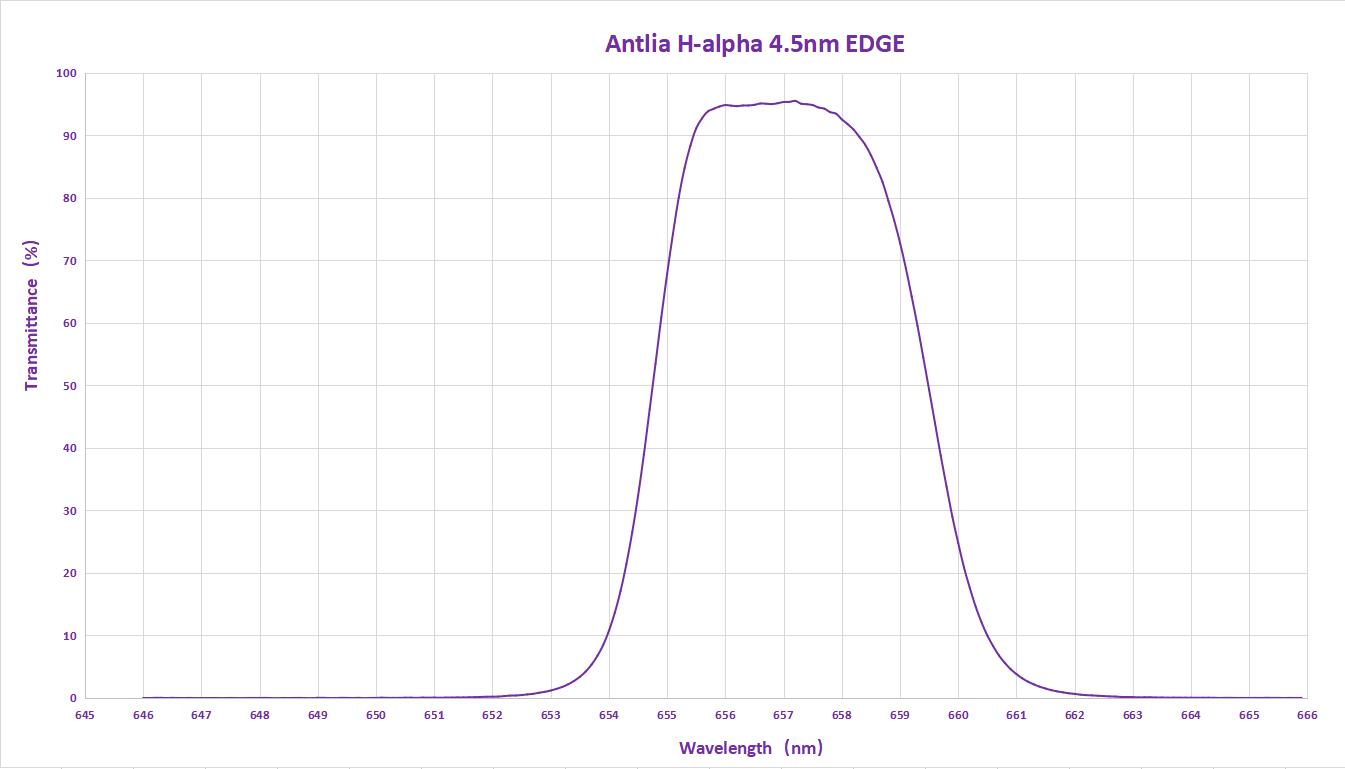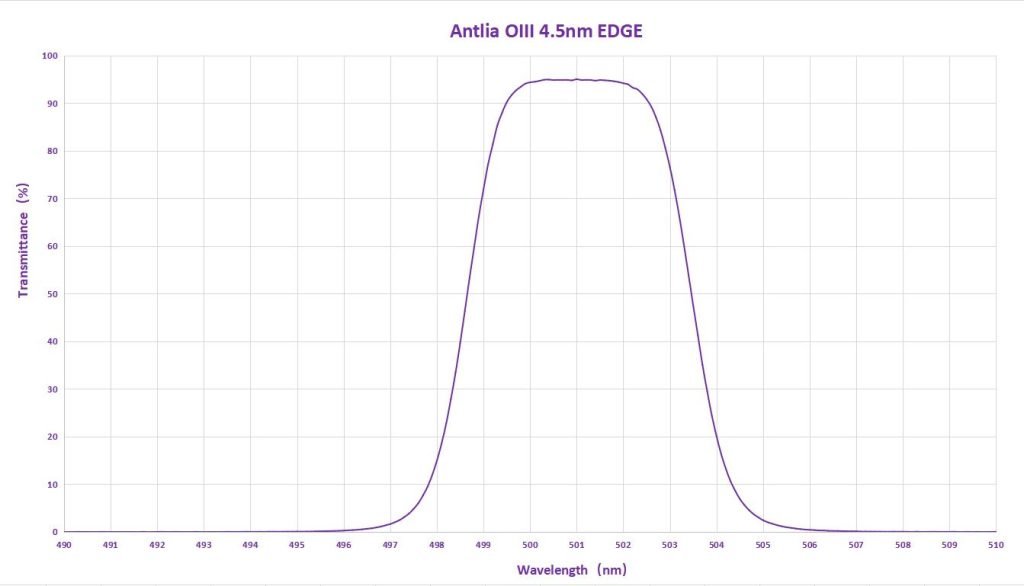The Antlia OIII 4.5nm EDGE narrowband filter delivers exceptional contrast and signal-to-noise ratio by narrowing the FWHM (Full Width at Half Maximum) to a sharp 4.5nm bandpass. Antlia incorporates the high transmittance and OD5 suppression technology from their 3nm Pro series to boost performance in this EDGE variant.
This filter achieves 85% transmission at the 500.7nm OIII line, allowing you to capture the faintest OIII nebula structures with clarity and detail. While broader filters often lose transmission due to centre wavelength (CWL) shifts, the EDGE series holds strong—retaining over 85% transmission within ±1nm of the centre.
You can use this filter confidently across a wide range of systems. Whether you’re working with long focal ratios or fast optics down to f/3, the 4.5nm EDGE handles it with minimal signal loss. Antlia’s blue-shift data backs it up—this filter meets the demands of fast systems without compromise.
Application and Performance:
-
Maximise contrast with high transmittance and a narrow 4.5nm bandwidth
-
Reduce halos around bright stars with a steep spectral profile
-
Prevent internal reflections by using a single optical substrate
-
Target OIII-rich deep sky objects such as emission nebulae, planetary nebulae, Wolf-Rayet nebulae, and supernova remnants
-
Capture clean images in both light-polluted areas and dark sky sites
-
Extend your imaging sessions even under moonlit skies
-
Use with fast optics down to f/3 and retain strong signal with minimal loss
-
Eliminate stray light reflections thanks to edge-blackened unmounted filters
-
Spend less time in post-processing with superior optical reliability
-
Rely on this filter only for deep sky objects that emit in the OIII wavelength
Important: This filter isn’t suitable for solar imaging or night-time visual observation.
Warning: Never look directly at the Sun using this filter. Ignoring this safety warning can result in serious and permanent eye damage.
Antlia also offers dual narrowband filters designed specifically for one-shot colour (OSC) cameras. These include the ALP-T Dualband Ha&OIII 3nm and the SII&Hb 3.5nm filters. When used together, they enable the capture of narrow-band spectral data across four channels—H-alpha, OIII, SII, and H-beta. You can separate and recombine these channels during post-processing to create a wide range of colour palettes. This flexibility allows you to boost luminance contrast in RGB-balanced images or produce false-colour combinations such as H-O-Hb, S-H-O, H-S-OHb, and H-O-O to suit your creative and scientific goals.




Reviews
There are no reviews yet.